Exploring the hidden wonders beneath Rome’s bustling streets offers a captivating glimpse into the city’s rich history. This 3-hour walking tour takes visitors underground, where they’ll uncover ancient aqueducts, eerie catacombs, and the well-preserved ruins of an athletic stadium from the 1st century AD. From the Capuchin Crypt to the Bone Church, this small-group experience provides a thought-provoking contrast to the vibrant city above, showcasing Rome’s engineering marvels, religious practices, and cultural heritage. For those eager to dive deeper into the city’s secrets, this tour promises a truly immersive and enlightening adventure.
Key Points
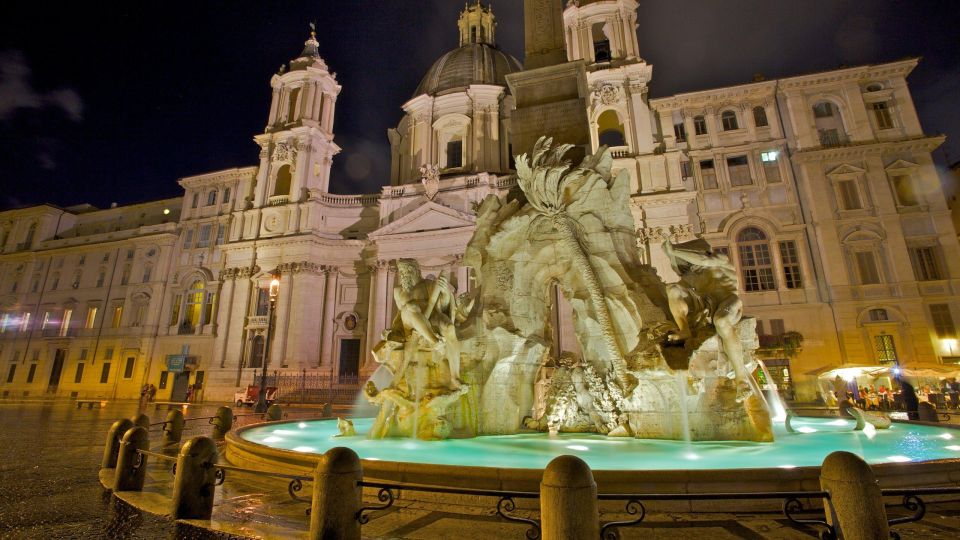
- A 3-hour guided walking tour that explores the hidden and eerie aspects of Rome, including underground aqueducts, crypts with skeletons, and an ancient stadium.
- The Capuchin Crypt, also known as the ‘Bone Church of Rome,’ is a cemetery constructed entirely out of the bones of around 3,700 deceased Capuchin friars.
- The tour provides a glimpse into the engineering marvel of Rome’s ancient aqueduct system, which supplied the city with a reliable source of fresh water for centuries.
- The Water Supply of Ancient Rome was a testament to the ingenuity and ambition of the city’s engineers, with an aqueduct system spanning hundreds of miles.
- The tour includes a visit to the remarkable 2,000-year-old remains of the ancient athletics stadium commissioned by the Roman emperor Domitian, lying beneath Piazza Navona.
Tour Overview
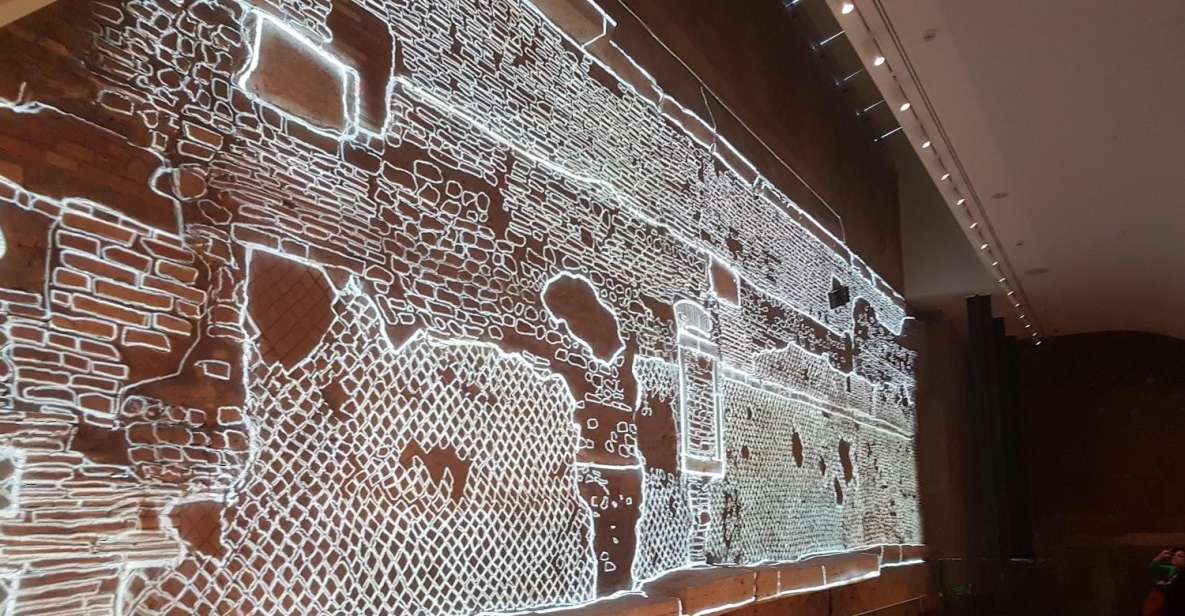
This 3-hour guided walking tour allows visitors to uncover hidden aspects of Rome, including underground aqueducts, crypts with skeletons, and an ancient stadium.
Guests will explore the Capuchin Crypt, also known as the ‘Bone Church of Rome,’ where the cemetery is constructed out of the bones of about 3,700 deceased friars.
The tour also includes a visit to an ancient aqueduct, where participants can see where it empties into a fountain.
Plus, the tour takes visitors to the 2000-year-old Stadium of Domitian, which lies about 4.50 meters below street level under Piazza Navona.
The small group tour, limited to 10 participants, is available in both Italian and English.
You can also read our reviews of more walking tours in Rome
Capuchin Crypt
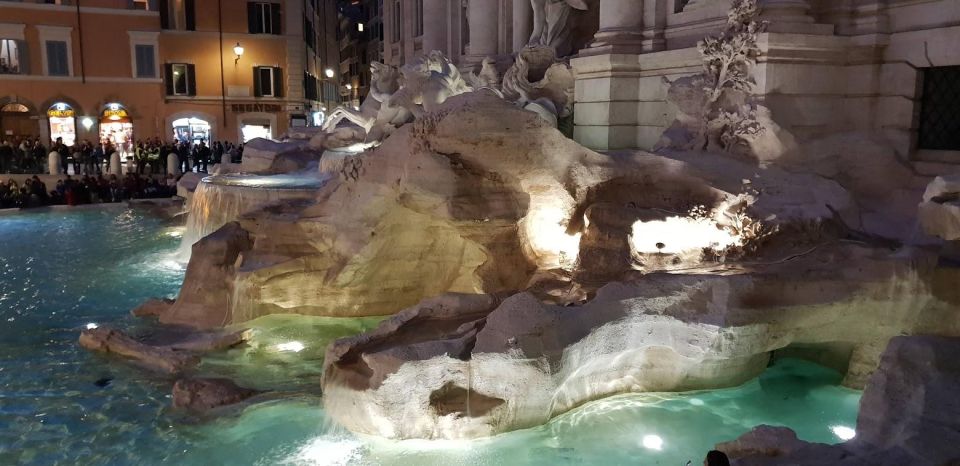
The Capuchin Crypt, also known as the ‘Bone Church of Rome,’ is a cemetery constructed out of the bones of about 3,700 deceased Capuchin friars.
The crypt is a unique and macabre sight, with the skeletal remains of the friars arranged in intricate designs on the walls and ceilings.
Visitors can explore the six small chapels that make up the crypt, each decorated with a different theme using the bones.
The Capuchin Crypt is a fascinating and eerie part of Rome’s history, offering a glimpse into the religious practices and beliefs of the Capuchin order. It’s a must-see for those interested in the darker side of the city’s past.
Bone Church of Rome
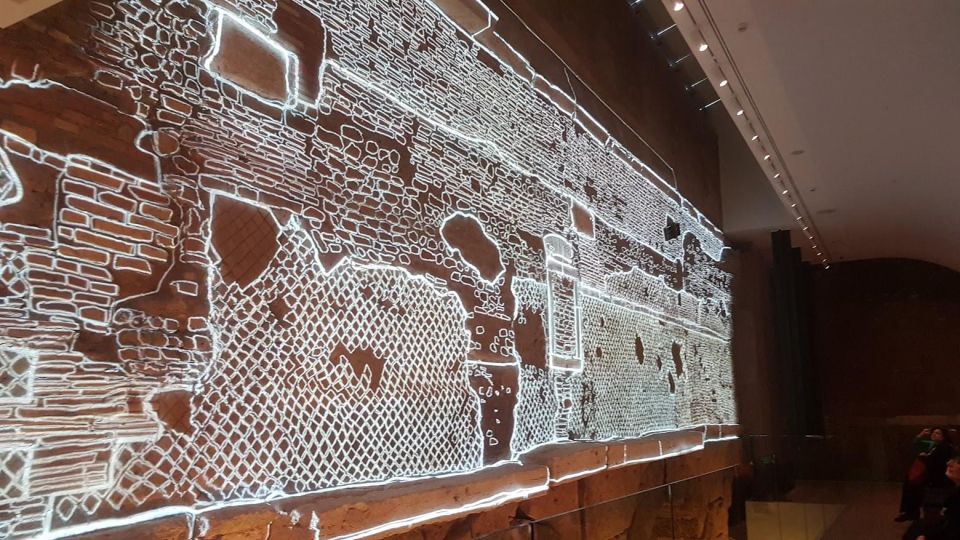
Visitors to the Capuchin Crypt, also known as the ‘Bone Church of Rome,’ can explore a macabre sight – a cemetery constructed entirely out of the bones of around 3,700 deceased Capuchin friars.
The crypt, located beneath the Church of Santa Maria della Concezione, features elaborately decorated chambers where the bones have been artfully arranged into chandeliers, mosaics, and other intricate designs.
Visitors can wander through the dimly lit corridors, taking in the haunting, yet thought-provoking display.
The Bone Church serves as a sobering reminder of mortality and the cycle of life and death. It’s a unique and unforgettable experience that provides a glimpse into the religious and cultural traditions of Rome’s past.
Ancient Aqueducts
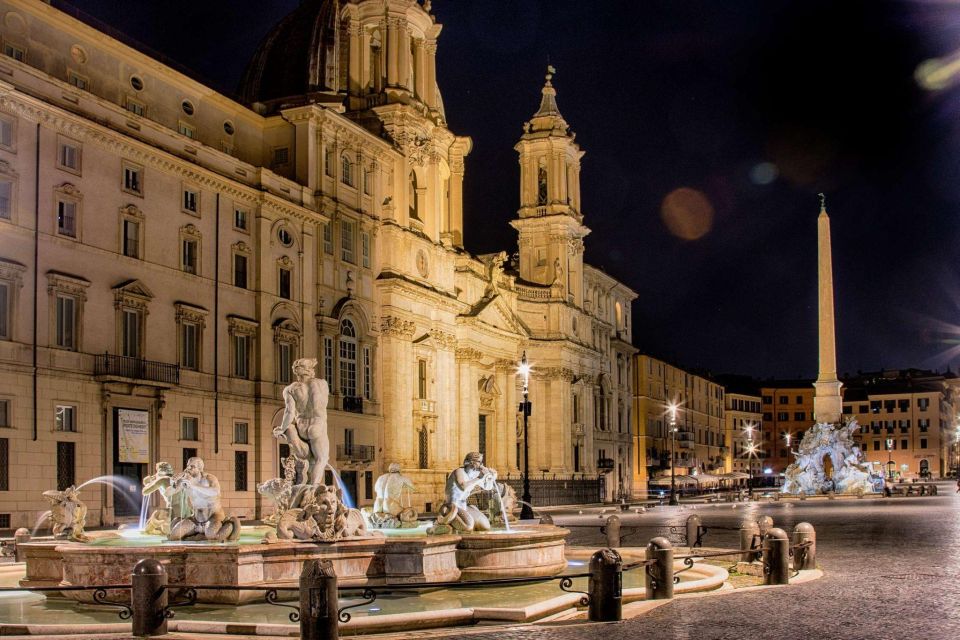
Ancient Rome’s aqueduct system was an engineering marvel, supplying the bustling city with a reliable source of fresh water for centuries. Visitors can explore one of these remarkable feats of ancient infrastructure on the tour, where they’ll see an aqueduct emptying into a historic fountain.
The tour offers a unique opportunity to learn about the ingenious design and construction of Roman aqueducts:
Aqueducts were built with a slight downward slope to harness gravity and transport water over long distances without the use of pumps.
The structures were made of stone, brick, and concrete, showcasing the advanced building techniques of the time.
These aqueducts were crucial to the development and growth of ancient Rome, providing water for drinking, sanitation, and agriculture.
More Great Tours NearbyWater Supply of Ancient Rome
Rome’s aqueduct system was the lifeblood of the ancient city, supplying a steady flow of fresh water for its growing population and expanding infrastructure.
Spanning hundreds of miles, these engineering marvels drew water from distant springs and rivers, transporting it through a network of arched structures, canals, and underground tunnels.
At its peak, the aqueducts provided over 250 gallons of water per person per day, meeting the needs of baths, fountains, and households.
The ruins of these ancient aqueducts, like the one visitors can see on the walking tour, serve as a testament to the ingenuity and ambition of Rome’s engineers, who harnessed the power of water to support the city’s rise to greatness.
- Vatican Museums, Sistine Chapel & St Peter’s Basilica Guided Tour
- Colosseum & Ancient Rome Tour With Roman Forum & Palatine Hill
- Skip-the-Line Group Tour of the Vatican, Sistine Chapel & St. Peters Basilica
- Pompeii Day Trip From Rome With Mount Vesuvius or Positano Option
- Skip the Line: Vatican Museums & Sistine Chapel With St. Peters Basilica Access
- Expert Guided Tour of Colosseum Underground OR Arena and Forum
Stadium of Domitian
The Stadium of Domitian lies an impressive 4.50 meters below the bustling streets of Piazza Navona, a remarkable feat of ancient engineering that has endured for over 2,000 years.
This majestic stadium, built in the 1st century AD, served as a venue for athletic competitions and events favored by the Roman emperor Domitian.
Some key features of this captivating site include:
- The stadium’s massive size, capable of seating thousands of spectators.
- The well-preserved remains of the seating areas and the field where athletes competed.
- The opportunity for visitors to enjoy the history and atmosphere of this ancient Roman landmark.
Exploring the Stadium of Domitian provides a unique window into the cultural and architectural wonders of ancient Rome.
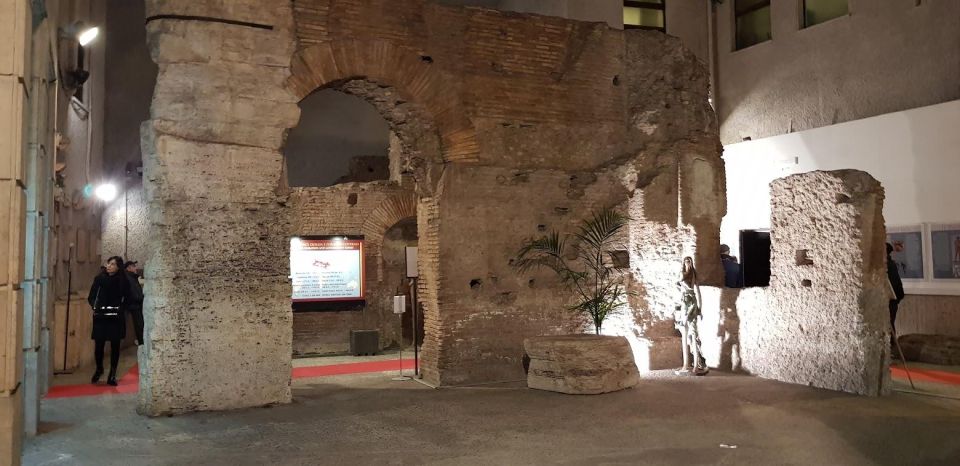
Buried beneath the bustling Piazza Navona, visitors can explore the remarkable 2,000-year-old remains of an ancient athletics stadium commissioned by the Roman emperor Domitian.
This impressive structure, which lies about 4.50 meters below the modern street level, offers a unique glimpse into Rome’s athletic heritage.
Visitors can wander through the stadium’s ruins, which include the original playing field, bleachers, and even the starting gates for the ancient races.
The site provides a tangible connection to Rome’s past, allowing guests to imagine the excitement and spectacle that would have unfolded here centuries ago.
This hidden gem offers a captivating contrast to the lively piazza above, inviting visitors to step back in time and enjoy Rome’s rich history.
Tour Details

This 3-hour guided walking tour in Rome allows guests to uncover hidden aspects of the city, including underground aqueducts, crypts with skeletons, and an ancient stadium. The small group tour is limited to 10 participants and is available in both Italian and English.
With free cancellation up to 24 hours in advance and the option to reserve now and pay later, this tour offers convenience and flexibility.
Key highlights include:
-
Exploring the Capuchin Crypt, also known as the ‘Bone Church of Rome,’ constructed from the bones of about 3,700 deceased friars.
-
Visiting an ancient aqueduct and witnessing where it empties into a fountain, showcasing the infrastructure that supplied water to ancient Rome.
-
Discovering the 2000-year-old Stadium of Domitian, located 4.50 meters below the Piazza Navona.
Frequently Asked Questions
Are Photography and Video Recording Allowed on the Tour?
Photography and video recording are generally allowed on guided tours, but travelers should check with the tour operator beforehand. Some sites may restrict or prohibit photography and recording for preservation or privacy reasons.
What Kind of Walking Is Involved, and Is It Suitable for All Fitness Levels?
The tour involves a moderate amount of walking, though it’s suitable for most fitness levels. Participants should be prepared to walk for up to 3 hours, with some stairs and uneven terrain. Those with mobility concerns should check with the tour operator.
Are There Any Age Restrictions or Requirements for the Tour?
There are no age restrictions for this tour, but it may not be suitable for young children. The tour involves a significant amount of walking and some underground exploration, so participants should be physically able to handle the activity level.
Can the Tour Be Customized or Personalized for Special Interests?
The tour can be customized to some extent to accommodate special interests. While the core itinerary remains, the guide may be able to provide additional information or highlights based on guests’ specific requests or preferences.
Are There Any Accessibility Options or Accommodations Available?
The tour offers some accessibility accommodations, including audio guides and modified routes for guests with mobility limitations. Visitors should inquire about specific needs when booking to ensure the tour can be adjusted to meet their requirements.
Recap
Exploring the hidden wonders beneath Rome’s bustling streets, this tour offers a captivating glimpse into the city’s engineering marvels, religious practices, and cultural heritage.
From eerie catacombs adorned with skeletal remains to the well-preserved ruins of an ancient athletic stadium, the tour provides a thought-provoking contrast to the vibrant city above, leaving visitors with a deeper understanding of Rome’s rich history.
You can check availability for your dates here:More Walking Tours in Rome
- 2 Hour Guided Walking Tour in Trastevere and Jewish Ghetto
- Group tour: Rome Walking Tour
- Ghetto, Pantheon, Navona Food, Craftmanship, Walking Private Tour
- Ancient Rome and Beyond Walking Tour
- Baths of Caracalla Exclusive Private Tour | Roman Daily Life Walking Guided Tour
- Rome and Tuscany Secret Treasures Self Guided Walking Tour
More Tours in Rome
- Private Amalfi coast, Positano & Pompeii day tour from Rome
- Rome Evening Tour: Fountains and Squares, Semi-Private Tour
- Guided Tour of the Catacombs from the Colosseum
- Explore Ancient Rome Off the Beaten Path Tour (Private)
- Best of Rome Vespa Tour with Francesco (Official Licensed Guide)
- Skip the Line Vatican and Sistine Chapel Private Night Tour
More Tour Reviews in Rome
Not for you? Here's more nearby things to do in Rome we have reviewed
- Private Amalfi coast, Positano & Pompeii day tour from Rome
- Rome Evening Tour: Fountains and Squares, Semi-Private Tour
- Truffle Hunting, Lunch & Cooking Class in Rome’s Countryside
- Rome: Express Ancient Rome in GolfCart
- Guided Tour of the Catacombs from the Colosseum
- Mini Photoshoot at Colosseum
- Wine and Canvas Club of Rome
- Explore Ancient Rome Off the Beaten Path Tour (Private)
- Best of Rome Vespa Tour with Francesco (Official Licensed Guide)
- Private Luxury Transfer from Rome to Sorrento or Amalfi Coast
- Skip the Line Vatican and Sistine Chapel Private Night Tour
- Rome Lunch Food Tasting with Wine Pairing Experience Trastevere
